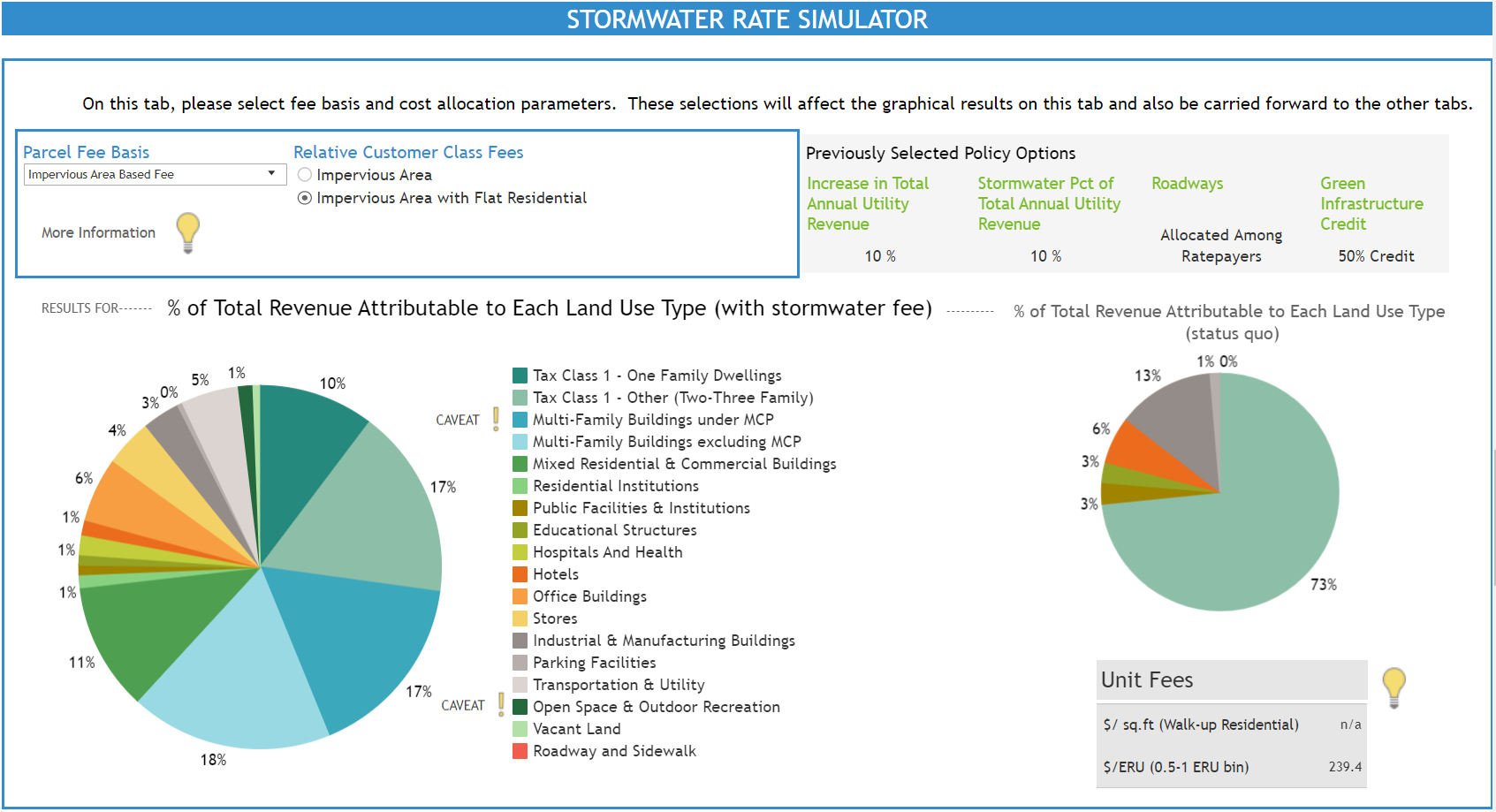Stormwater Rate Simulator for New York City
Published:
Background
New York City Department of Environmental Protection (DEP) customers are currently charged for water, wastewater, and stormwater service based upon their metered water consumption. Although wastewater usage correlates well to a customer’s water use, a property’s stormwater discharges into the public sewer system bear no relation to the amount of water they use, which depends on factors including property size and amount of impervious surface coverage. As a result, under the current rate structure, many customers are significantly over-charged relative to their fair share of the city’s stormwater management costs, while others are significantly under-charged. In particular, owners of properties with large parking lots, roofs and other impervious surfaces generally do not pay the full costs of treating their stormwater runoff, but instead externalize those costs onto other water ratepayers.
Stormwater poses significant challenges for New York by triggering raw sewage overflows, disrupting sanitary sewage treatment processes, carrying pollution from developed areas into nearby surface waters, and causing flooding. The city must make substantial investments in stormwater infrastructure, sustained over the next several decades, to address this problem.
Stormwater Rate Simulator
This interactive tool, that I developed during my internship at Valor Water Analytics for Riverkeeper and Natural Resources Defense Council, allows users to examine alternative rate structures that could more equitably support New York City’s sustainable management of stormwater into the future. Specifically, it illustrates the implications of restructuring the city’s water and wastewater charges to create a separate stormwater fee based on parcel-specific factors that, unlike the current rate structure, correlate to the amount of stormwater a property generates.
The tool focuses on the distributional effects of alternative stormwater fee designs, by examining how the total average water, wastewater, and stormwater bill would change for customers falling into various land use categories. Based on user input choices for future hypothetical scenarios, simulated monthly rates are displayed instantly by scraping through thousands of pre-simulated combinations of rate structures.

Simulated share of future revenues per landuse category- one of the outputs of the dashboard
This interactive tool is hosted live at the Natural Resources Defense Council’s website.
